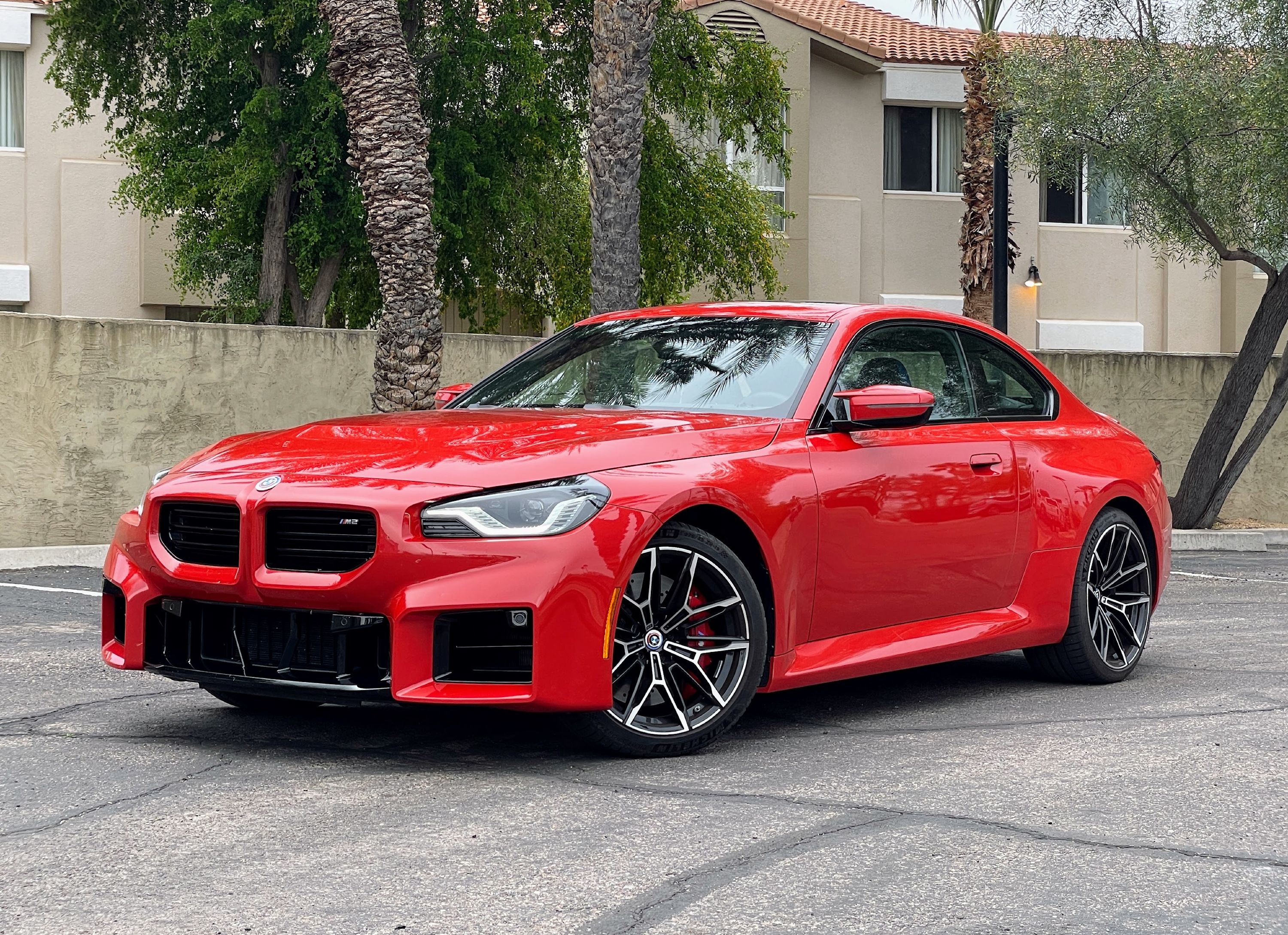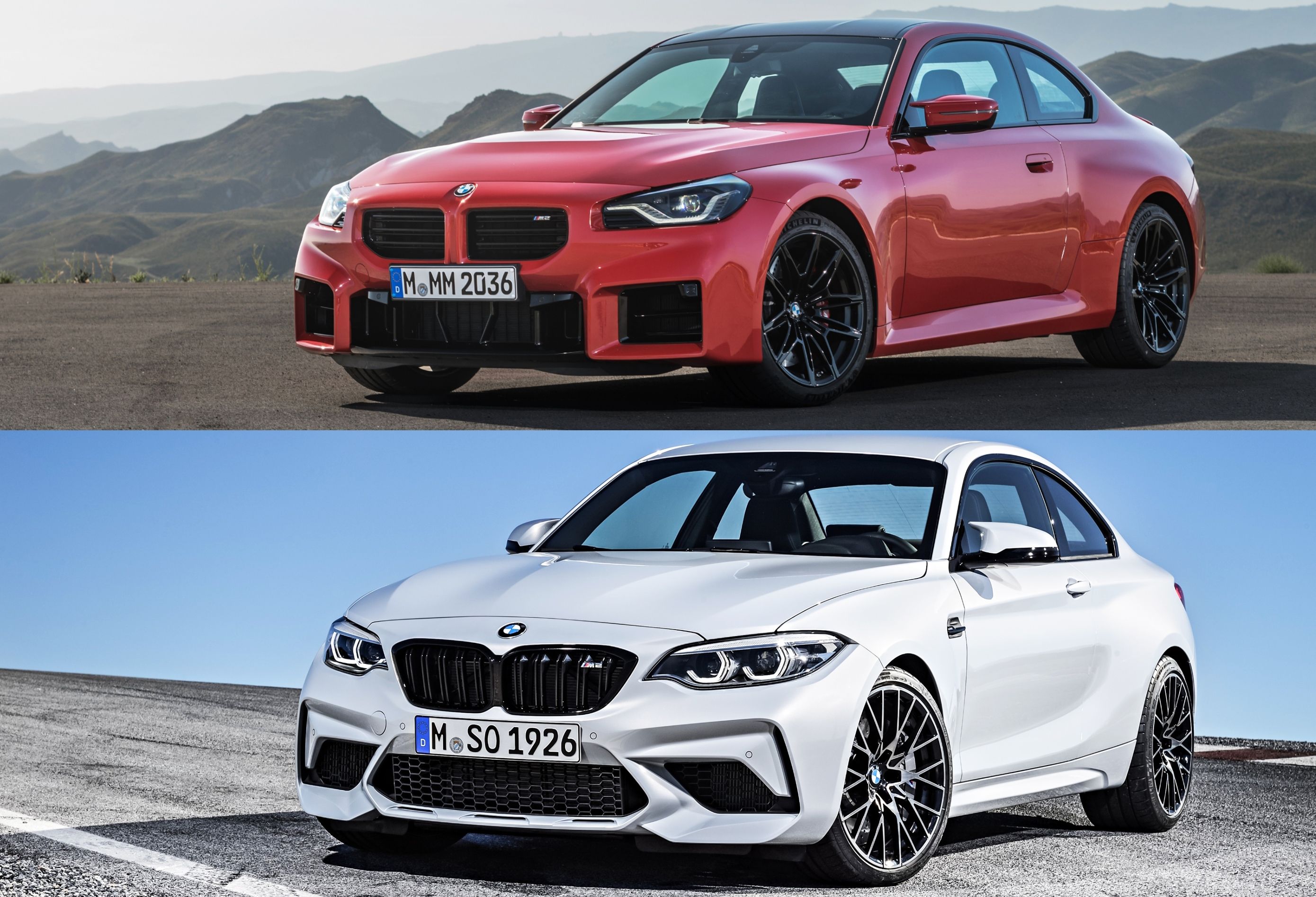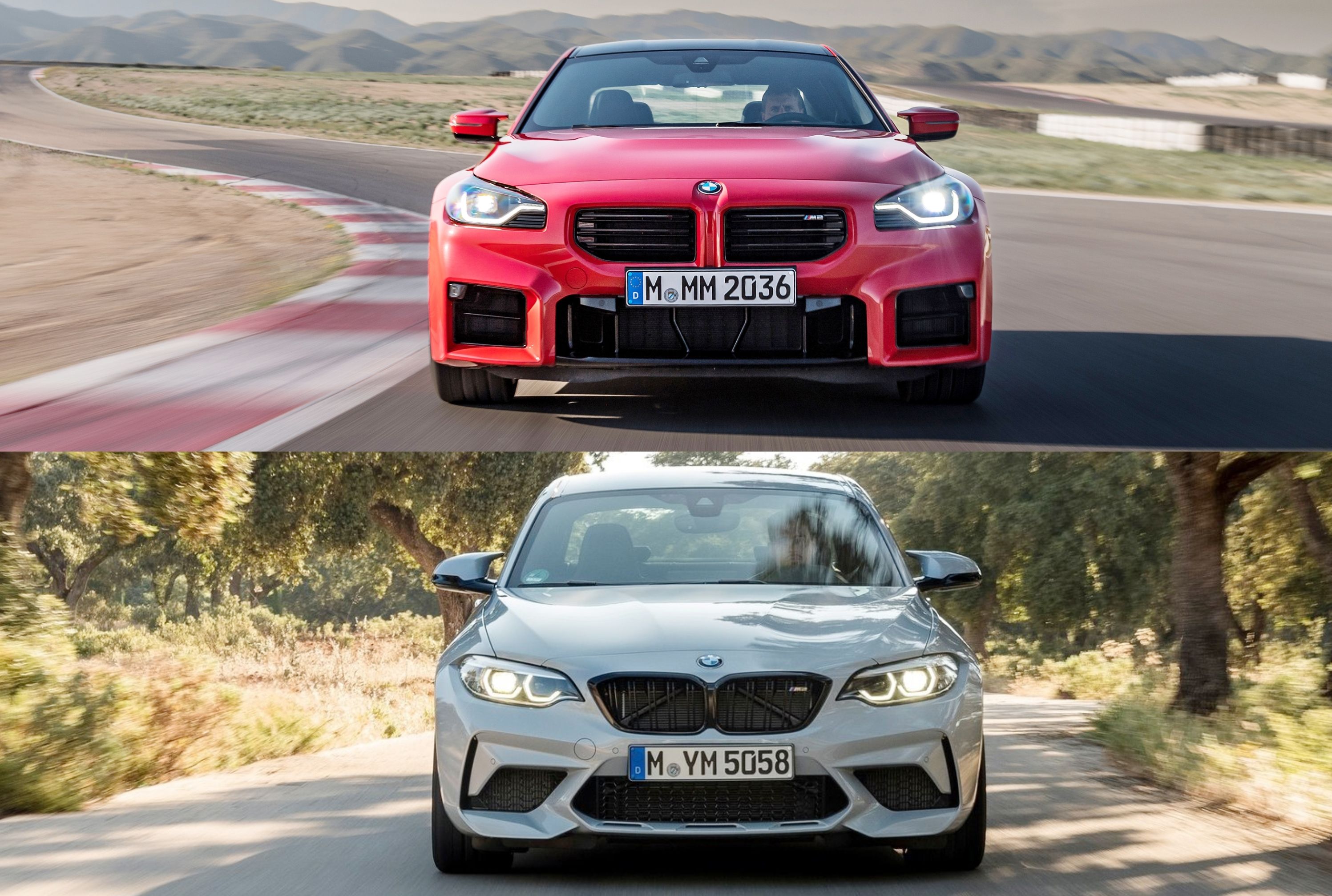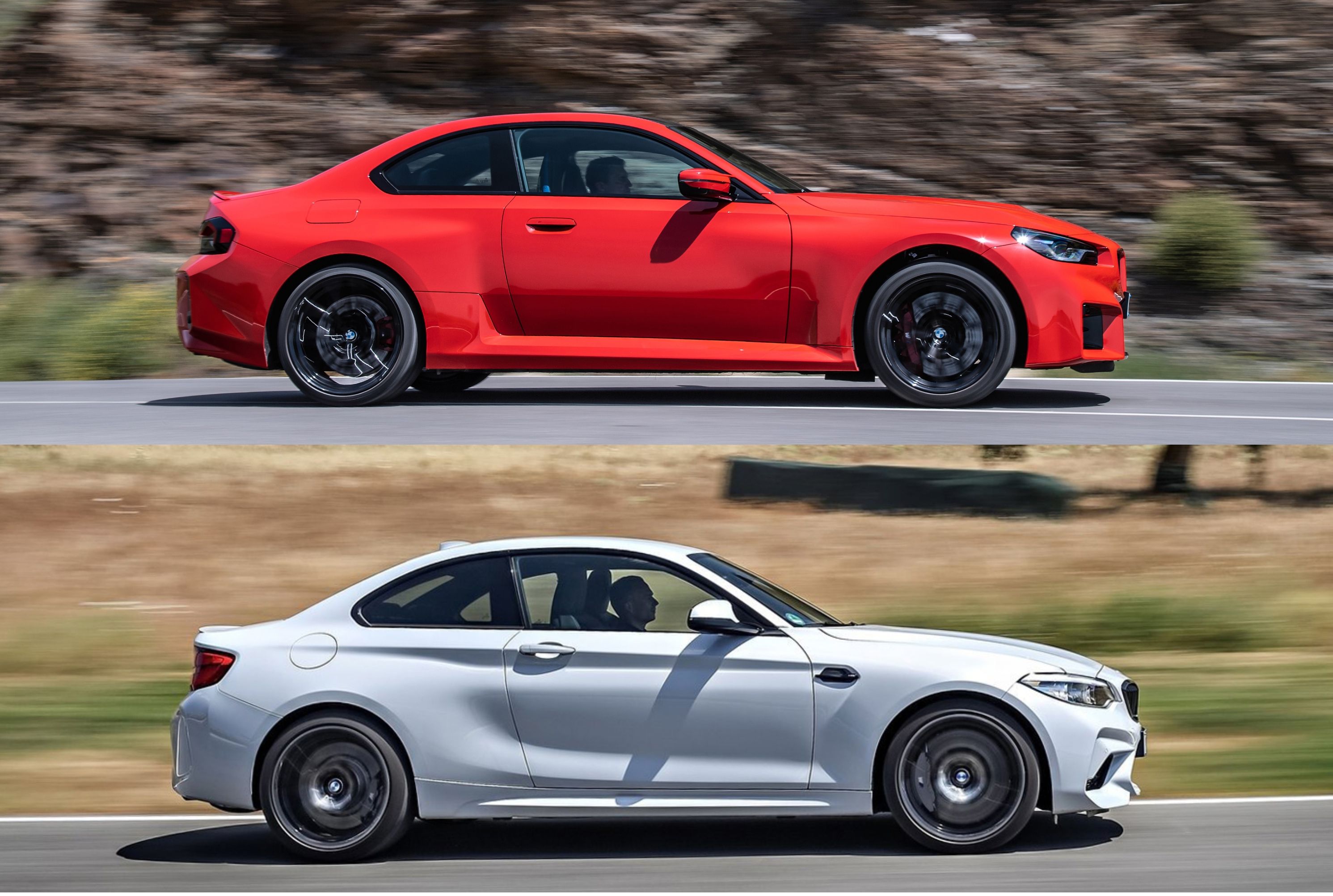
BMW could probably have kept the first-generation, F87 BMW M2 on the market for another two or so years and fans wouldn't have complained. But it's gone now, and in its place is the new G87 BMW M2. Replacing what is one of its most-loved individual M models with something new must have been an intimidating undertaking for BMW, and that's probably why it retained key ingredients like a manual gearbox, rear-wheel drive, and a six-cylinder engine. But there have been many changes, not all of them for the better, and that's what we've come here to find out: is the new G87 actually a better car than the one it replaces?
Styling: The Curse Of The Sequel
Let's get this one out of the way first. This writer has yet to come across anyone who feels that the new G87 BMW M2 is a better-looking car than its F87 predecessor. The F87 was cheeky and sporty, but it also had a more organic shape - the headlights (which still had dual rings beneath each cluster as BMWs have for decades) complemented the edges of the grille with more finesse. It had wider fenders than a standard 2 Series, but not excessively so, and the pert rear end had a cleaner iteration of BMW's L-shaped taillights.
The new G87 definitely packs more of a visual punch. It has plenty of muscle wherever you look, but the bumpers with their blocky shapes don't flow into the rest of the body nearly as smoothly as with the F87.
We'll admit that seeing it in person improved matters somewhat, and the look may yet grow on us further in the months to come, but even the grille with its strange borders compels you to question the design choices, whereas the F87 was simply accepted as a plucky evolution of the standard 2 Series.
Dimensionally, the G87 has grown by 4.1 inches in length and 1.3 inches in width, but its height has gone down by 0.3 inches. For the G87, a carbon roof is available as an optional extra which lowers the car's weight and, as you'll see in the next section, that's more important than it was. The standard moonroof has a 20% larger glass area than that of the outgoing car.
Weight: Packing On The Pounds
BMW M cars are getting heavier and heavier, and the new M2 which is supposed to be a lighter and more agile car than the M4 is uncomfortably close to its larger sibling in terms of its weight. Equipped with the manual gearbox, the new M2 weighs 3,814 pounds, over 200 lbs more than the previous M2 Competition. It is now within 16 lbs of the base M4, and when equipped with the automatic, the new M2 weighs 3,867 lbs, heavier than both the M3 and M4 when similarly equipped.
We'll have to get behind the wheel to see if this increase in mass has affected the dynamics of the new M2.
Powertrain And Performance: Quicker Auto, Slower Manual
Under the hood of the new BMW M2 is BMW's fiery and flexible S58. The same mill as the one in the M4 and M3, it has been detuned to make 453 horsepower and 406 lb-ft of torque in the M2. That's 48 hp more than the S55 in the previous-generation M2 Competition. While peak torque stays the same, the new car maintains 406 lb-ft over a wider band than the old M2.
Once again, rear-wheel drive and a six-speed manual gearbox are standard. Rev matching is still standard, but BMW calls the new system its Gear Shift Assistant which can be deactivated via the M Setup menu. A more significant change comes with the optional automatic: the previous seven-speed dual-clutch has made way for a conventional eight-speed automatic.
BMW's eight-speeder has been praised in the past for almost matching the fast shifts of a dual-clutch, but we suspect that a modicum of excitement may be lost between the old M2 Competition's aggressive but engaging DCT and the new M2's smooth automatic. At least, that's what we found was the case with the new M4 which also evolved to use a torque converter.
As far as performance goes, the new M2's weight gain negates any significant advantage up to 60 mph. The manual will hit that mark in 4.1 seconds, which is actually a tenth slower than the previous M2 Comp manual. However, at 3.9 seconds, the new automatic model outshines the M2 Comp DCT's 4.2-second effort.
The new car comes with the 10-stage M Traction Control system that will provide even more options when taking the M2 out for track days. As part of M Drive Professional, there is also a new M Drift Analyzer that assists the driver in sharpening their cornering skills at higher speeds. While this won't necessarily make the new M2 better to drive, the wider track widths that now match the M4 could. And, unlike before, the new M2 now has staggered tire sizes, with those at the back measuring 20 inches - an inch larger than the front ones. Still, there are some enthusiasts who will love playing around with toys like the M Drift Analyzer.
Chassis technology derived from the latest M3 and M4, along with increased torsional stiffness in front and standard adaptive M suspension, should all combine to make the new M2 a hoot to drive.
Interior: From Analog To Digital
The F87 M2 had a pleasingly analog feel to its interior but it had definitely started to age. The design was a bit drab, materials were good rather than great, and it wasn't exactly laden with equipment. As expected, the G87 is a palpable step up.
Out goes the old 8.8-inch touchscreen and in its place is BMW Operating System 8 running on the brand's glitzy Curved Display. This pairs a 12.3-inch gauge cluster with a 14.9-inch touchscreen interface. We do miss the clarity and simplicity of the F87's rounded dials, but the G87 comes with much more functionality.
The BMW Intelligent Personal Assistant can do more, such as adjust the climate control with a simple voice command, and connectivity is enhanced with an available eSIM and 5G antenna system. The brand's Active Driving Assistant and park distance control are newly standard options, too.
Nicer Vernasca leather seats are now standard, and you can order M Carbon bucket seats for the new car that not only hold you more firmly in place but give the cabin a much racier look. On the new steering wheel, there are the distinctive red M1 and M2 buttons that drivers can tap to easily activate their favored drive settings.
BMW hasn't supplied interior dimensions so we can't say yet if the new car is more spacious, but it should be with over four inches of extra body length. At 13.8 cubic feet, the new M2's trunk is exactly the same size as before, so it's still a relatively practical two-door sports coupe.
Pricing And Verdict: Two Steps Forward, One Step Back
The G87 BMW M2 comes in at $62,200, just over $3,000 more than the F87 M2 Competition. That seems like a reasonable increase for a car with more power and superior technology, not to mention a vastly improved interior. Can these improvements atone for a more muddled design, though? They just might.
Improving upon the outgoing M2 must have been an almighty task for BMW, but crucially, it didn't break any cardinal sins with the new one. It chose to retain six-cylinder power, a manual, and RWD at a time when downsizing and electrification have taken over. If any of these three elements were lost, we'd have a much harder time accepting the G87. The new coupe is still a thoroughly unique proposition relative to its Audi and Mercedes-Benz competitors, even if it has put on more weight than we'd like.
No longer as easy on the eye, the new M2 promises to be just as captivating as the old one where it matters most: from the driver's seat.



